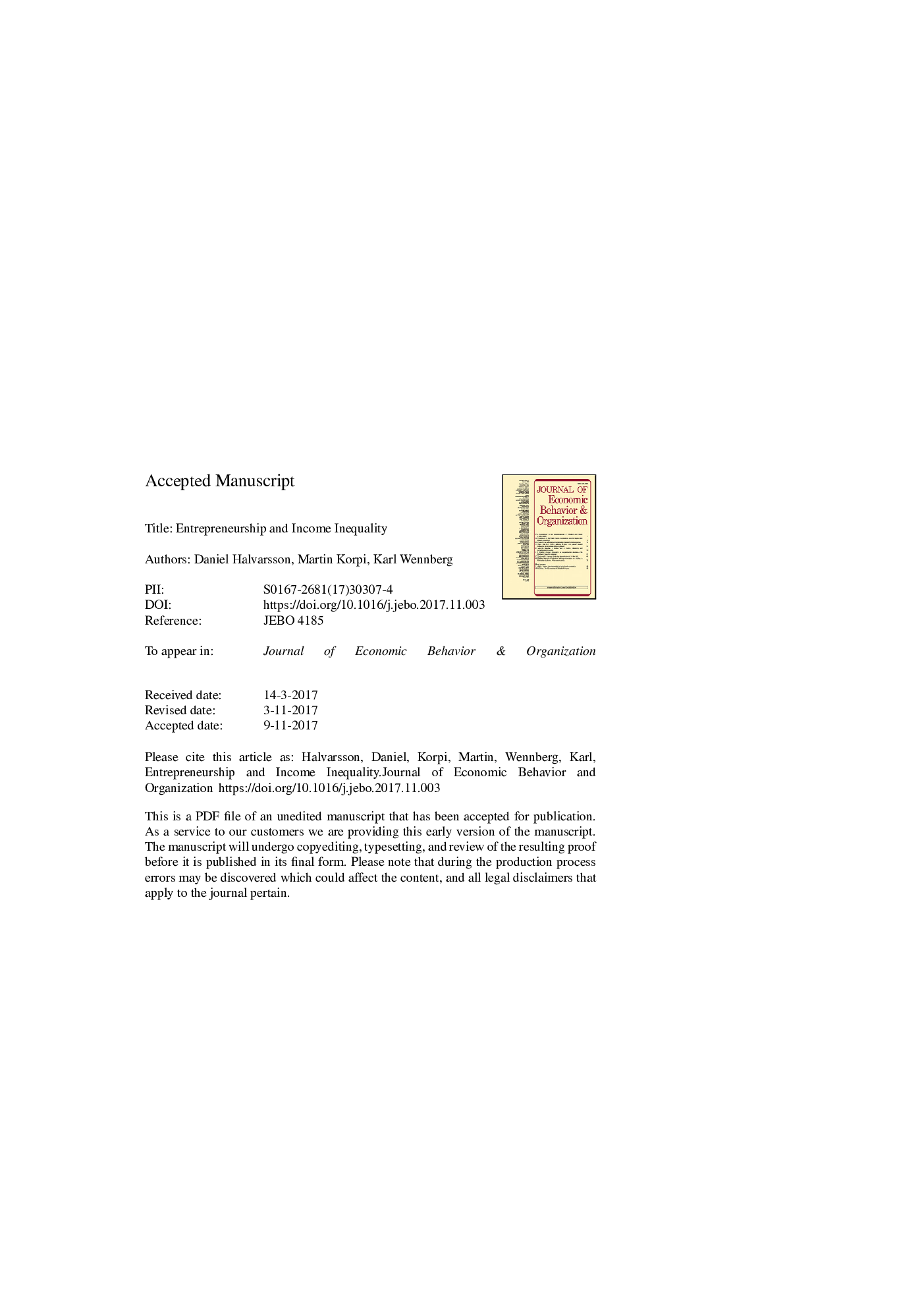| Article ID | Journal | Published Year | Pages | File Type |
|---|---|---|---|---|
| 7242693 | Journal of Economic Behavior & Organization | 2018 | 42 Pages |
Abstract
Entrepreneurship research highlights entrepreneurship as a simultaneous source of enhanced income mobility for some but a potential source of poverty for others. Research on inequality has furthered new types of models to decompose and problematize various sources of income inequality, but attention to entrepreneurship as an increasingly prevalent occupational choice in these models remains scant. This paper seeks to bridge these two literatures using regression-based income decomposition among entrepreneurs and paid workers distinguishing between self-employed (SE) and incorporated self-employed (ISE) individuals in Sweden. We find that the proportion of self-employed in the workforce increases income dispersion by way of widening the bottom end of the distribution, whereas the proportion of incorporated self-employed contributes to income dispersion at the top end of the distribution. Implications for research are discussed.
Related Topics
Social Sciences and Humanities
Economics, Econometrics and Finance
Economics and Econometrics
Authors
Daniel Halvarsson, Martin Korpi, Karl Wennberg,
